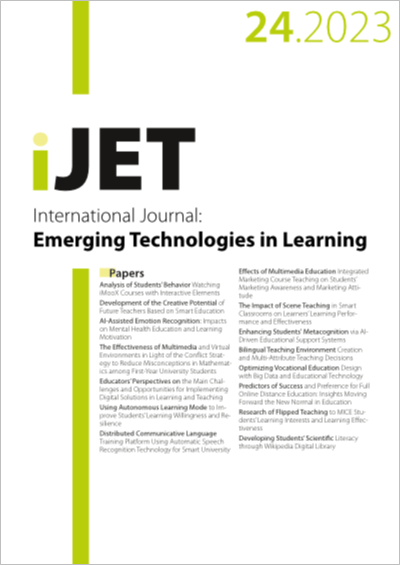Developing Students’ Scientific Literacy through Wikipedia Digital Library
DOI:
https://doi.org/10.3991/ijet.v18i24.45605Keywords:
scientific literasy, digital library, wikipedia, rasch model, biology educationAbstract
This study investigates the impact of utilizing the digital library Wikipedia on high school students’ scientific literacy skills in biology. This research used a quasi-experiment design with a one-group pre-test and post-test method, conducted in a high school in Bandung, Indonesia. The participants consisted of 60 tenth-grade students. The research instrument consisted of 24 multiple-choice questions designed to assess nine scientific literacy indicators, including the ability to describe phenomena scientifically, design and evaluate scientific investigations, and interpret data and evidence scientifically. Each question was scored dichotomously, with the correct answer receiving a score of 1 and incorrect answers assigned a score of 0. Pre-test and post-test scores were analyzed using the Rasch model through Winsteps Version 3.73. Based on data analysis, the items fit with the Rasch model because the infit and outfit MNSQ is 1.0 and the residual item of unexplained variance is 2.3% to 9.8%. The reliability of the items shows an item value of 0.97, which is classified as excellent. The indicators considered the most difficult before being treated were identifying accurate scientific ideas, distinguishing between types of sources, and evaluating literature source validity after the treatment. There was a significant improvement in students’ scientific literacy skills after utilizing the digital library, Wikipedia. The findings provide valuable insights into the effectiveness of integrating digital media into biology courses, highlighting the potential of Wikipedia as a digital reference source for enhancing students’ scientific literacy in high school settings.
Downloads
Published
How to Cite
Issue
Section
License
Copyright (c) 2023 Uus Toharudin, Lira Fessia Damaianti, Ida Yayu Nurul Hizqiyah

This work is licensed under a Creative Commons Attribution 4.0 International License.



